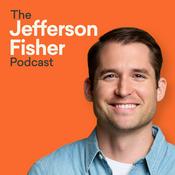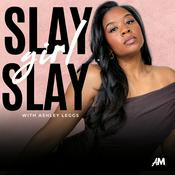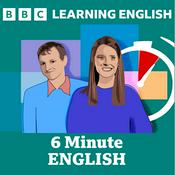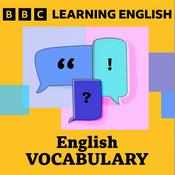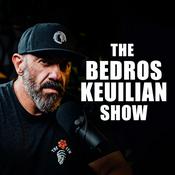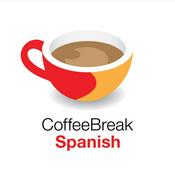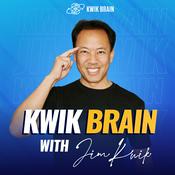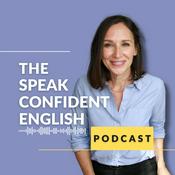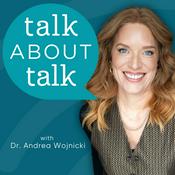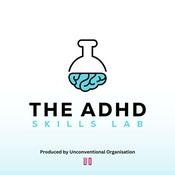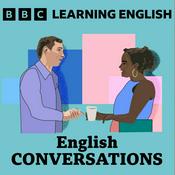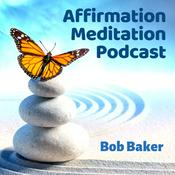Education Matters With MySchoolOptions

51 episodes
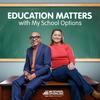
Episode 48 - Community, Innovation, and Faith: A Conversation with Dr. Brian Disney
2025/11/20 | 35 mins.
In this inspiring episode of Education Matters, hosts Sarah and Cesar sit down with Dr. Brian Disney, Superintendent of Catholic Schools for the Archdiocese of Indianapolis. Drawing on nearly 30 years in education, Dr. Disney reflects on his journey from classroom teacher to district leader, sharing powerful insights on teaching, faith, innovation, and community. Together, they explore how Catholic education is evolving—honoring tradition while preparing students for a rapidly changing world. Episode Highlights Dr. Disney’s Path to EducationInspired by his father—a lifelong educator—Dr. Disney recalls how early experiences tutoring and coaching fueled his love of teaching and shaped his path toward school leadership. Lessons from the ClassroomReflecting on his years as a high school math teacher, Dr. Disney emphasizes the importance of building inclusive, caring classrooms where every student feels seen and supported. He shares how understanding life beyond academics is key to helping students thrive. Transformative Leadership at Mooresville High SchoolAs principal, Dr. Disney led initiatives that expanded college credit and career-readiness programs. Through a strong team effort, Mooresville High dramatically increased honors diplomas and eliminated the need for remedial classes at the local Ivy Tech campus—a remarkable achievement in student preparation and success. Faith and Innovation in Catholic EducationNow overseeing 69 schools, Dr. Disney explains how Catholic teachings on human dignity and community serve as the foundation for both moral and academic excellence. He discusses balancing faith-based formation with innovative approaches to meet students’ diverse needs. Redefining SuccessFor Dr. Disney, true success means helping each student realize their full human potential—whether through college, career, or other meaningful paths—while embracing the unique gifts of every learner. Parents as PartnersEchoing the Catholic view of parents as primary educators, Dr. Disney shares strategies for fostering genuine family engagement—from cultural celebrations and community events to cultivating a welcoming school culture that reflects shared values. Looking AheadLooking toward 2035, Dr. Disney predicts that the most essential skills will include spiritual depth, ethical use of technology, and strong interpersonal relationships—underscoring the enduring need for authentic, faith-filled community in education. Did you find this episode informative? Help us out! Leave a review Share it with your friends Give us a 5 Star rating on your podcatcher of choiceFor more information about school choice and your school choice options, visit our website at https://www.i4qed.org

Episode 47 - Advancing Non Public Education in Indiana with James McNeany
2025/11/06 | 32 mins.
In this engaging episode, Sarah and Cesar welcome James McNeany, a lifelong educator and the new Executive Director of the Indiana Non Public Education Association (INPEA). James shares his journey from math teacher and coach to principal and, now, state-level leader for non public schools. The discussion dives deep into topics like school choice, parent empowerment, and how non public schools contribute to Indiana’s education ecosystem. Key Takeaways: James’s Path in Education: From engineering student at Purdue to math teacher, coach, and school administrator, James’s nontraditional journey revealed a passion for mentoring young people and making a difference in their lives. Leadership Lessons: James reflects on how each step in his career—from teaching students with diverse backgrounds to leading entire school communities—shaped his perspective on what great schools need to thrive. INPEA's Mission & Vision: Taking the helm at INPEA, James shares his excitement for supporting Indiana’s non public schools, building on the legacy of previous leaders, and working to ensure school choice policies benefit all families. The Role of Non Public Schools: Spotlight on how these schools give parents the ability to find the right educational fit, create strong communities, and support missions and values that reflect diverse family needs. Universal School Choice in Indiana: What it means for families and schools after recent legislation, and how financial barriers are being reduced so all families can access quality education options. Future Challenges & Opportunities: James discusses the importance of protecting local autonomy for non public schools, guarding against overregulation, and expanding real choice for families—especially in Indiana’s “education deserts.” Did you find this episode informative? Help us out! Leave a review Share it with your friends Give us a 5 Star rating on your podcatcher of choice For more information about school choice and your school choice options, visit our website at https://www.i4qed.org

Episode 46 - Bonus Episode: A Snapshot of Choice
2025/10/23 | 17 mins.
In this special bonus episode, Cesar and Sarah dives deep into the Indiana Choice Scholarship Program, exploring its evolution, impact, and what the future holds for private school participation in Indiana. This episode breaks down the latest 2025 Choice Report from the Indiana Department of Education, providing insights into how school choice is shaping educational opportunities and equity across the state. Key Takeaways: Historical Evolution of School Choice in Indiana Indiana’s journey to educational freedom, beginning with the first charter school law in 2001, major reforms in 2008 that enabled public-to-public school transfers, the introduction of tax credit scholarships and vouchers for private schools, and recent expansions to universal eligibility. The Choice Scholarship Program: Opening Doors Impact on Hoosier families, making private school education accessible to more students. How expansions have progressively reduced barriers, especially income requirements, paving the way for nearly universal eligibility by the 2026–27 school year. By the Numbers: School Choice Participation Enrollment breakdown: ~80% of students attend their assigned traditional public school. 20% participate in some form of school choice (public-to-public transfers, charter, innovation network, or private schools). Largest group: ~95,000 students using public-to-public transfer. Private school choice: 8% overall, 6% using vouchers (~74,741 students). Growth in private school enrollment—steady increase of ~5,000 students per year. Who is Participating? Spotlight on demographics and financial background: Average participating family size is about 4.6 people. Average family income: just under $100,000. Majority white, split evenly male/female, with strong representation from other ethnicities. Higher participation at elementary levels (K-5). Average voucher received: ~$6,000; average private school tuition: just under $8,000. Geographical Trends Highest choice participation in metropolitan/suburban areas due to more available options (private and charter schools). Some rural/small-town counties have limited or no private schools, affecting participation. Looking Forward The imminent shift to universal school choice and its potential implications. Challenges in expanding access to options in underserved areas. Did you find this episode informative? Help us out! Leave a review Share it with your friends Give us a 5 Star rating on your podcatcher of choice For more information about school choice and the Indiana Choice Scholarship Program, visit our website at https://www.i4qed.org

Episode 45 - Putting Families First: Inside Indiana’s ESA and CSA Program Success
2025/10/09 | 35 mins.
On this episode, Cesar and Sarah sit down with Indiana State Treasurer Daniel Elliott. Daniel isn’t just the man who oversees $16 billion of Hoosier funds—he’s also a passionate advocate for school choice, a dad of four, a former software engineer, and a true Hoosier at heart. Daniel shares his personal journey from growing up in rural Jennings County to public service, his family’s diverse education choices, and his strong belief that parents know their kids best. The focus turns to Indiana’s innovative Education Scholarship Account (ESA) and Career Scholarship Account (CSA) programs. Daniel explains why he believes the Treasurer’s Office is best equipped to manage these programs instead of the Department of Education. He highlights the office’s record of efficiency (including reducing payment processing times from 45 days to just 3 days), significant cost savings, and a parent-centric, flexible approach hailed as the “gold standard” nationwide. Throughout the episode, you’ll hear real stories about how school choice options—homeschool, charter, public—have benefited Daniel’s own children, and powerful testimonials about ESA’s impact on special needs students. Daniel also addresses recent legislative proposals to move ESA/CSA program oversight, raising concerns about the possible loss of personalized service and program flexibility if transferred to a larger bureaucracy. Key Takeaways: Daniel Elliott’s Background:Growing up in Southern Indiana, being first in his family to attend college, and his move from IT to public service. School Choice Journey:The Elliott family's hands-on experiences with public school, homeschool, and charter schools for their four children. Inside Indiana’s ESA & CSA Programs: What the programs offer (customized education funding for special needs students and career/apprenticeship pathways). Why the Treasurer’s Office administers these programs, not the Department of Education. Dramatic improvements in efficiency, provider options, and direct, responsive service to families. Parent-Centric Approach:How Daniel’s team listens to parents and adapts the programs to fit real needs—plus why this nimble, small-business style model works better than traditional bureaucracy. Advocacy and Legislative Concerns:The potential risk to families if ESA/CSA oversight moves to a larger agency, and Daniel’s appeal for lawmakers to keep the program where it is. How Listeners Can Help: Parents: Share feedback and personal success stories with officials. All: Reach out to Indiana lawmakers to support school choice and the Treasurer’s Office’s continued oversight. Did you find this episode informative? Help us out! Leave a review Share it with your friends Give us a 5 Star rating on your podcatcher of choice For more information about school choice and the Indiana Choice Scholarship Program, visit our website at https://www.i4qed.org

Episode 44 - Celebrating Indiana’s Literacy Gains: Greg Harrell Talks IREAD Scores & the Future of School Choice
2025/9/19 | 17 mins.
In this episode, Sarah welcomes Greg Harrell, the newest addition to the IQE/MSO team, for his podcast debut. Greg shares his background in public service, education, and government, and provides an in-depth look at the recently released 2025 IREAD scores—Indiana’s critical assessment for third-grade literacy. Together, they discuss the state’s post-pandemic progress, key education policy priorities, and the strong results from Indiana’s non-public schools.Key Takeaways: Meet Greg Harrell: Greg’s roots in southern Indiana, his career path from state government to education advocacy, and his passion for policy and school choice. What is IREAD? Overview of Indiana’s IREAD test for third graders: Origins, purpose, and why it matters. The evolution of the assessment since its 2013 implementation. The 2025 IREAD Results: Statewide increase: Over 87% of third graders passed, hitting pre-pandemic levels. Record gains: Largest year-over-year improvement since the test’s creation, with about 6,000 more students passing compared to last year. Non-public schools shine: 96% proficiency rate for Indiana’s private schools. Factors Driving Improvement: $170 million invested since 2022 in literacy initiatives (public and philanthropic funding, including from Lilly Endowment). Earlier identification and support: Second graders now take IREAD, helping educators identify and assist struggling students sooner. Looking Forward: The Department of Education’s ambitious goal: 95% of third graders passing IREAD by 2027. Ongoing policy priorities: Defending school choice, reducing unnecessary regulation, and tweaking programs for better outcomes in the 2026 legislative session. Why School Choice Matters: Greg’s personal perspective on the evolution and importance of educational choice in Indiana. The alignment between K-12 and higher education in empowering families and students with options. Did you find this episode informative? Help us out! Leave a review Share it with your friends Give us a 5 Star rating on your podcatcher of choice For more information about school choice and the Indiana Choice Scholarship Program, visit our website at https://www.i4qed.org
More Education podcasts
Trending Education podcasts
About Education Matters With MySchoolOptions
Listen to Education Matters With MySchoolOptions, After School Is After School With Sis G.U and many other podcasts from around the world with the radio.net app

Get the free radio.net app
- Stations and podcasts to bookmark
- Stream via Wi-Fi or Bluetooth
- Supports Carplay & Android Auto
- Many other app features
Get the free radio.net app
- Stations and podcasts to bookmark
- Stream via Wi-Fi or Bluetooth
- Supports Carplay & Android Auto
- Many other app features


Education Matters With MySchoolOptions
download the app,
start listening.



